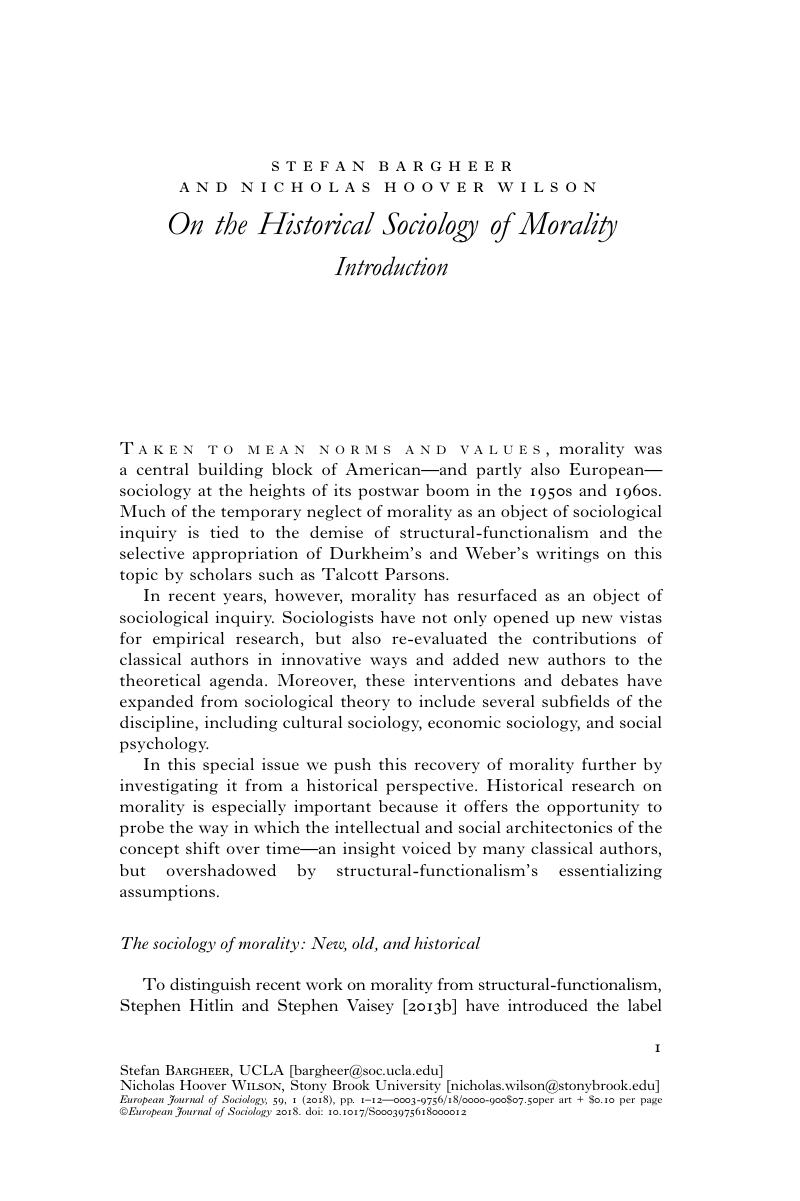Crossref Citations
This article has been cited by the following publications. This list is generated based on data provided by Crossref.
Wade, Matthew
2020.
Risky disciplining: On interdisciplinarity between sociology and cognitive neuroscience in the governing of morality.
European Journal of Social Theory,
Vol. 23,
Issue. 1,
p.
72.
Hitlin, Steven
2021.
Handbook of Classical Sociological Theory.
p.
631.
Lau, Jacqueline D
Song, Andrew M
Morrison, Tiffany
Fabinyi, Michael
Brown, Katrina
Blythe, Jessica
Allison, Edward H
and
Adger, William Neil
2021.
Morals and climate decision-making: insights from social and behavioural sciences.
Current Opinion in Environmental Sustainability,
Vol. 52,
Issue. ,
p.
27.
van den Hoogen, Elske
Daenekindt, Stijn
de Koster, Willem
and
van der Waal, Jeroen
2022.
Support for European Union membership comes in various guises: Evidence from a Correlational Class Analysis of novel Dutch survey data.
European Union Politics,
Vol. 23,
Issue. 3,
p.
489.
Mellor, Philip A.
and
Shilling, Chris
2023.
Handbook of the Sociology of Morality, Volume 2.
p.
117.
Passy, Florence
and
Monsch, Gian-Andrea
2023.
The Power of Morality in Movements.
p.
119.
Lembo, Alessandra
Ma, Xiangyu
and
Martin, John Levi
2023.
Handbook of the Sociology of Morality, Volume 2.
p.
3.
Abbott, Owen
2024.
Social Theorists of Morality.
p.
125.
Yu, Xinchi
Pöppel, Ernst
Zhan, Weidong
and
Bao, Yan
2024.
Cognitive entailments among “the true, the good, the beautiful”: a mainland Chinese sample.
Cognitive Processing,
Vol. 25,
Issue. 4,
p.
647.
Abend, Gabriel
Posselt, Lukas
and
Schenk, Patrick
2025.
New Frontiers in the New Sociology of Morality: From AI and Inequality to Backgrounds and Material Enablers.
Sociology Compass,
Vol. 19,
Issue. 1,



